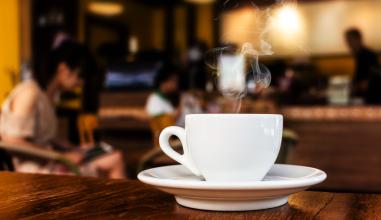The picking and processing of Coffee seasonal Flavor description of Coffee Variety producing area
Coffee picking and processing method picking season flavor description taste variety region
Water washing method is also called wet treatment method: After 12 hours after coffee picking, the outer layer of coffee fruit is removed by a pulp separator, the coffee beans are soaked in a large cement tank filled with water, the fruit is separated, and then the coffee beans are stuck in a fermentation tank for about 12-36 hours. After fermentation, the fermented coffee beans are washed with clean water, and the coffee beans are dried in a dryer or dried in the sun. At this time, the coffee beans are called "parchment coffee beans" and wait for export.
There are two ways to prepare coffee beans for the roasting process. The method chosen has a significant impact on the final value and quality of the coffee. The cheapest process is called the "dry process" and is used for lower-quality coffee beans, while higher-quality coffee beans are processed by the "wet process." Drying is used on unwashed coffee beans. Wet processing is used on thoroughly washed or semi-washed coffee beans. Most Arabica beans are processed wet, except in Brazil and Ethiopia, where drying is more common. Some robasta beans are also processed by wet processing
Drying method is also called drying method or non-washing method: drying method is relatively simple. First of all, just picked fruit will be widely spread in the sun field for a week or two, until the fruit issued a crackling sound so far, natural drying. After that, the dried pulp, endocarp and silver skin are removed by a hulling machine.
Advantages: The fruit aroma of coffee beans can be better preserved and the price is low.
Disadvantages: Coffee beans may be contaminated with earthy smell on the ground, and the quality of coffee beans is relatively uneven.
Fresh fruit-sun dried-remove all pericarp, seed coat-coffee green beans
Note: This method is mostly used for lower grade coffee beans, and is still commonly used in Brazil, Ethiopia, Congo, Indonesia, Yemen, etc.

Important Notice :
前街咖啡 FrontStreet Coffee has moved to new addredd:
FrontStreet Coffee Address: 315,Donghua East Road,GuangZhou
Tel:020 38364473
- Prev

Flavor description of Brazilian Hilado Coffee beans
In July this year, the Yunnan Coffee Association said that the depressed market situation has led to low enthusiasm for picking by enterprises or farmers. In Honghe, Baoshan and other places, there is still a phenomenon of abandoning harvesting and tube abandonment, which has brought certain losses to coffee production in the province. In addition, according to the statistics after the end of this season, Jia Ben told every
- Next

Delong drip filter coffee machine coffee can not leak down what to do? Using tutorials
Delong drip filter coffee machine coffee can not leak down what to do? Using the tutorials automatic coffee machine extractor to clamp up and down the water plate, and neither the water tray nor the extractor can get it out. It is estimated that this failure is caused by the customer incorrectly cutting off the power plug, opening the back cover of the machine, receiving the rotating pulley, making the extractor rise to a slightly higher position, then check the power supply, boot, and troubleshooting.
Related
- What brand of black coffee is the most authentic and delicious? what are the characteristics of the flavor of the authentic Rose Summer Black Coffee?
- Introduction to the principle and characteristics of the correct use of mocha pot A detailed course of mocha pot brewing coffee is described in five steps.
- Which is better, decaf or regular coffee? how is decaf made?
- How much is a bag of four cat coffee?
- How about four Cat Coffee or Nestle Coffee? why is it a cheap scam?
- Which is better, Yunnan four Cats Coffee or Nestle Coffee? How about cat coffee? is it a fake scam? why is it so cheap?
- How about Cat Coffee? what grade is a hoax? which instant coffee tastes better, four Cat Coffee, Nestle Coffee or G7 coffee?
- Process flow chart of coffee making-Starbucks coffee making process what coffee tastes good at Starbucks
- The top ten best coffee beans in the world Rose summer coffee or Tanzanian coffee tastes good
- Yunnan four cat coffee is good to drink?_four cat coffee is a big brand? four cat blue mountain coffee is fake?

